
Writer Jason Huffnagle is traveling all across Europe, drinking coffee and sharing with us the cultures, recipes, and traditions of the beverage all across the continent. In this edition, he explores Florence and Venice.
BY JASON HUFFNAGLE
SPECIAL TO BARISTA MAGAZINE
Photos courtesy of Jason Huffnagle
Catch up with this series by checking out part one here, part two here, part three here, and part four here.
Florence and Venice
Coffee drinkers and baristas alike owe a great deal to Italy for its contributions to coffee culture. It was in Italy that Luigi Bezzera first registered a patent for the espresso machine, the plans for which were later bought by Desiderio Pavoni, another Italian, who decided to begin commercially producing this new machine, thus creating not only a new market but also a staple of an entire profession. Italians also credit themselves with creating a unique (and now familiar) job title for the coffee professional. Their original word barman was considered “not Italian enough” and, in a bout of nationalistic fervor during the 1940s, the term barista was coined.
Arguably, coffee culture as it exists today would be significantly different without these and many other contributions. So, while I had trouble finding coffee to my taste in Venice and Florence, it was good to reflect on the heritage and groundbreaking work done by the coffee professionals who came before me.
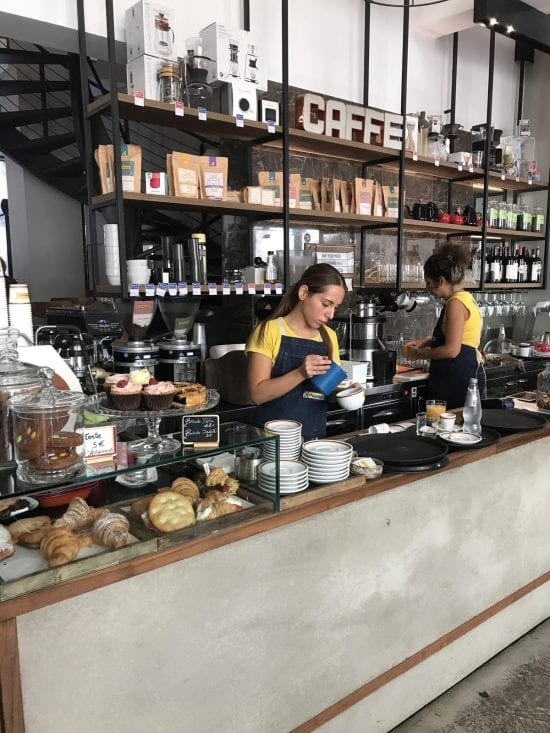
Ditta Artigianale in Florence
Located in Florence, Ditta Artigianale (which roughly translates as “artisan company”) has three locations and lives up to its name by roasting and serving high-quality craft coffee. It is clear the good folks here take their work seriously—something that was especially apparent as baristas and wait staff alike were steeped in tea and coffee knowledge, which I found to be uncommon in most of the other cafés I visited in Florence.
Ditta’s locations throughout the city promise to keep you continuously caffeinated as you see the seemingly unending number of important historical and cultural sites. Its original location on Via De’Neri is quite close to several unmissable stops, including the Uffizi Gallery, the Academy of Fine Arts (which houses Michelangelo’s David), and the Basilica of Santa Croce, which contains the tombs of several Italian greats: Galileo, Michelangelo, and Machiavelli.
Located on the southern bank of the River Arno, across the Ponte Vecchio (the only Florentine bridge to survive the Nazi retreat in August 1944), Ditta’s second location on Via Della Sprone is worth a visit. Compared to the De’Neri store, this location is quite spacious and features a lofted second floor that allows you to see the bar action below. There are several places to see on this side of the river, including the Pitti Place, the seat of power for Medici dukes; the Boboli Gardens with its famed 16th century Italian formal landscapes; and the Piazzale Michelangelo, a beautiful square with a panoramic view of Florence.
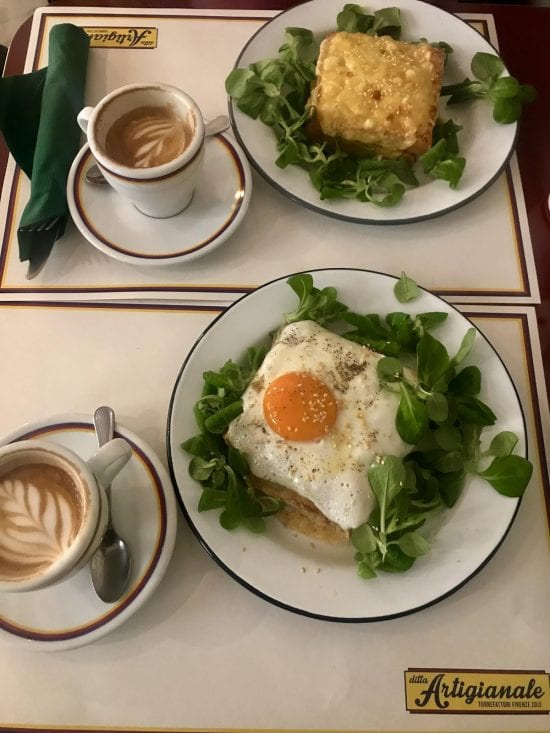
While I did not visit the third and final location, its proximity to the impressive Cathedral of Santa Maria del Fiore, also known as il Duomo, makes this a good potential stop before or after visiting the cathedral.
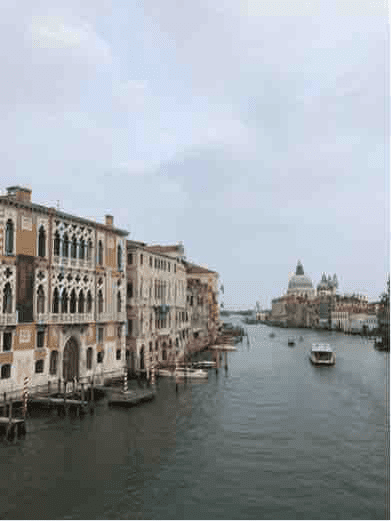
With its winding, narrow streets and patchwork of canals criss-crossed by stone bridges, the island city of Venice feels otherworldly. Coming in by boat, I was especially excited to visit a place that has inspired countless works of art and what is widely considered the first port in the western world to engage in the coffee trade.
Cannaregio Torrefazione in Venice
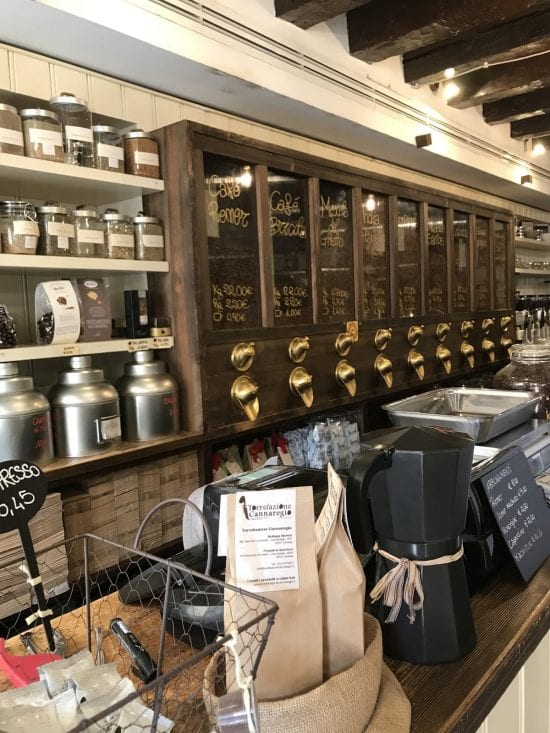
Located in, and named after, the Cannaregio district in Venice, Cannaregio Torrefazione is an artisanal coffee roaster and has been a neighborhood mainstay since 1930. You will find it a bit off the touristy drag, therefore providing you some relief from the oft-crowded and winding streets.While in the area, you may want to visit the Campo di Ghetto Nuovo, one of the former Jewish quarters in Venice, which is just north of the café, and be sure to pop into one of the many bakeries offering pane azzimo—a delicate anise flatbread and a Venetian Jewish specialty. Just a 15-minute walk southeast of Cannaregio Torrefazione, and snaking through the city, is the Grand Canal, which is crossed by the white stone Rialto Bridge, the canal’s oldest and most famous bridge.
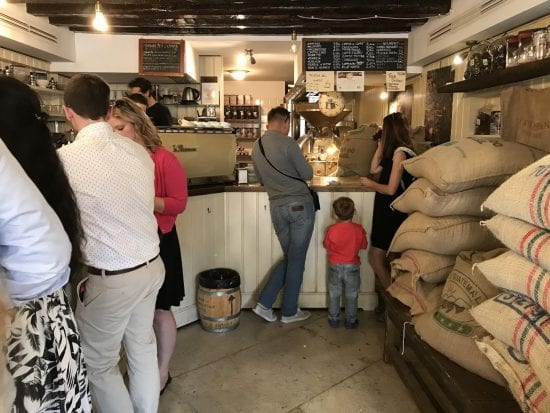
While in Venice, it is worth visiting the Gallerie dell’Accademia and the Peggy Guggenheim Collection, as these impressive museums of fine and modern art, respectively, have thrilling and thorough exhibitions—something art enthusiasts and the newly initiated to the visual arts can enjoy alike. Having visited the Gallerie myself, I took a quick respite at Bar Ai Artisti’s, which had a fun vibe and delicious Italian-style cappuccino.
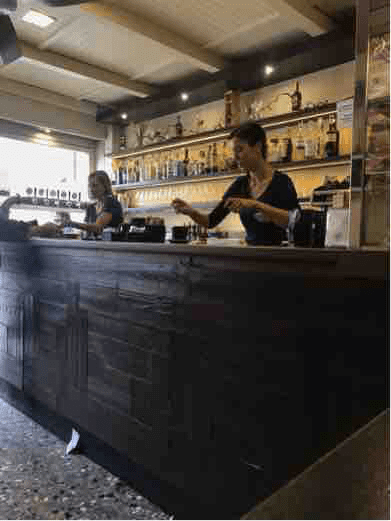
Leaving Italy, and with my next stop purportedly having hills that are alive with music, I am bracing myself for the cooler climates of Salzburg, Austria.
 ABOUT THE AUTHOR
ABOUT THE AUTHOR
Jason Huffnagle is a freelance writer for Barista Magazine who has worked in coffee as a barista for six years. Having recently left his “adult job” in the U.S. Senate, the Alaska native is spending the next four months traveling throughout Europe. You can keep up with his coffee-fueled travels and other exploits by following him on Twitter.

